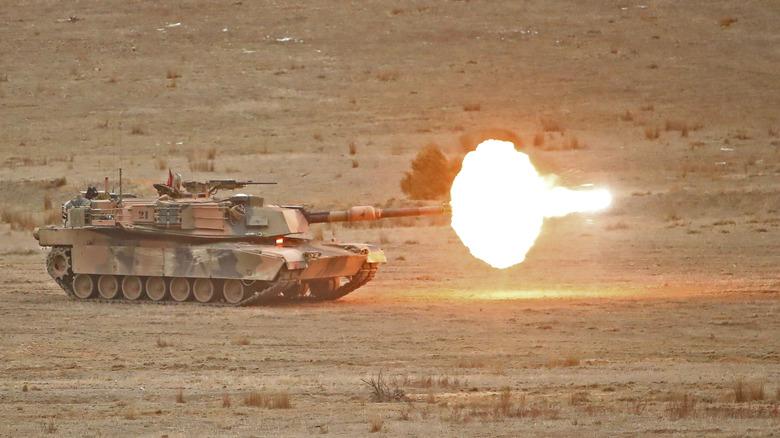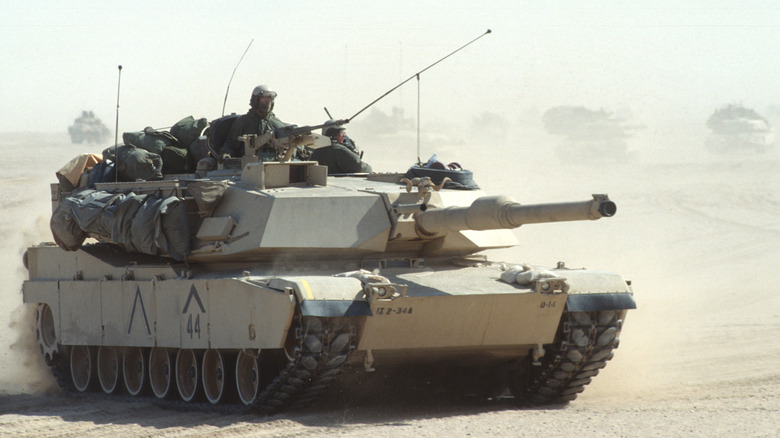Why The M1A1 Abrams Tank Was So Important For The Persian-Gulf War
The United States Army received its first batch of M1 Abrams tanks in February 1980 and, for more than 40 years, remained its primary ground combat armored fighting vehicle (AFV). The Abrams, named after General Creighton W. Abrams (one-time commander of the 37th Armored Battalion and then Army Chief of Staff), is considered one of the best tanks ever made.
In September of 2023, 31 of the older M1A1 Abrams tanks were delivered to Ukraine to use in their war against Russia. However, the M1A1s were heavier, used more fuel, and were thought to be more vulnerable to modern weapons than the newer M1A2s. Observations made from actual engagements proved all that to be true. So, the U.S. government is moving away with the old M1A1/2 platform and developing the new M1E3 Abrams.
But during the Persian Gulf War (aka Operation Desert Storm), which technically didn't last very long comparatively speaking (August 1990 – February 1991), the Abrams was the master of its domain. The combination of superior firepower (M256 120 mm smoothbore main gun), speed and maneuverability (powered by a Honeywell AGT1500 gas turbine engine), and classified armor reportedly made of depleted uranium put it head and shoulders above whatever the Iraqi army could muster.
And they proved it time and time again, in particular during what is considered the fiercest tank battle in history — not Gulf War history, all of history. Granted, tank history only stems back to 1916, but given how prolific tanks were during World War II, that's impressive.
The Abrams reigned supreme
The Army sent 1,900 M1A1 Abrams to Desert Storm. A ground offensive called Operation Desert Sabre took place February 24–28, 1990, and included a string of tank-on-tank engagements — 73 Easting, Medina Ridge, and Fright Night (officially Battle of Norfolk) — that over 36 hours involved over 3,000 tanks.
On February 26, Captain H.R. McMaster (Second Armored Cavalry Regiment) took 14 Abrams under his command and destroyed over 50 Iraqi tanks without incurring a single loss (this was 73 Easting). Its ability to fire on the move over any terrain was a decisive factor.
A rainstorm moved into the area as evening unfolded, making the battlefield a mud pit. Meanwhile, retreating Iraqi soldiers set oil fields on fire, and greasy smoke turned that battle into a true "Fright Night." Fortunately, the Abrams were equipped with some incredible engineering that included FLIR (a "new" thermal imaging technology) that helped American forces destroy roughly 600 Iraqi tanks while only losing a few of its own.
Iraq's Republican Guard put up a last stand at Medina Ridge. This final tank battle lasted only 40 minutes and involved approximately 3,000 vehicles. With the Abrams' ability to outshoot Iraqi tanks by about 3,280 feet and with the help of A-10 Warthogs, the 348 tanks made quick work of Iraqi forces. Per estimates, the Iraqis lost about 3,300 tanks during Desert Storm, while coalition forces only lost 31.

